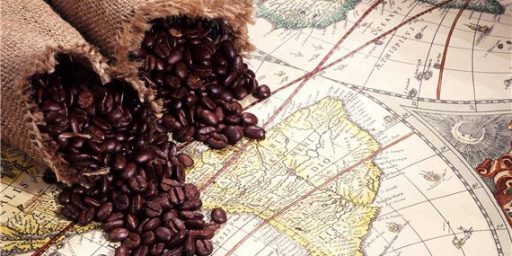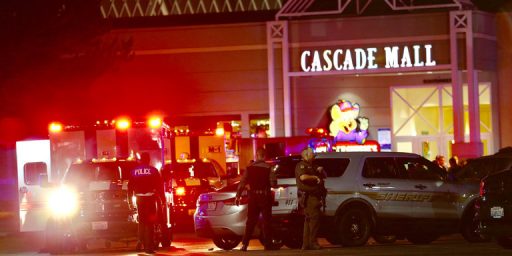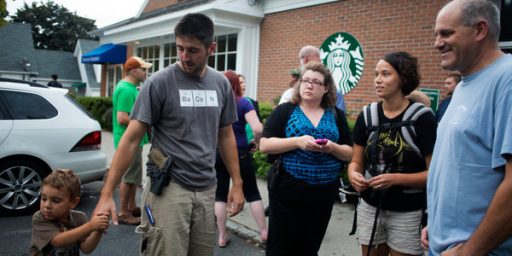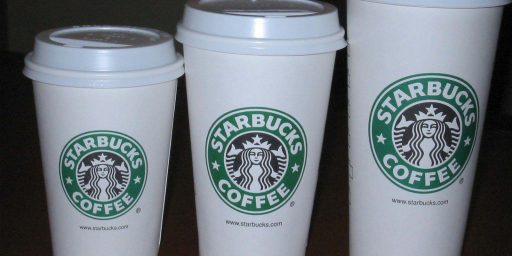Starbucks Overdose
Oliver Burkeman is having a serious case of caffeine overdose.
If you stand on the corner of Regent Street and Wigmore Street in central London, you are within five miles of 164 branches of Starbucks. This is a fact that is liable to provoke sudden dizziness, followed by a deep, soul-corroding fear for the future of humankind, sending you scuttling to your bedroom to throw yourself, sobbing, underneath a pillow – although this won’t help much either, since that pillow itself is within five miles of 158 branches of Starbucks, if it’s my bedroom you’re in, which, now I come to think of it, I hope you aren’t.
You can calculate your personal “Starbucks density” on the company’s website (Starbucks.com/locator), but be warned: any figure you come up with now will soon be out of date. Yesterday, the company announced a massive UK expansion, focused on London, where it expects to open new outlets at the rate of one a fortnight over the next 10 years.
How many Starbucks is too many? In what seems now like a distant historic era – actually, it was 1999 – the frenzied growth of the US chain became a symbol of expansionist multinational capitalism, all the more insidious because of the way each branch posed as a cosy neighbourhood coffee shop when, in fact, it was driving neighbourhood coffee shops to the wall. (Admittedly, the argument always had more credibility in San Francisco or Seattle than in Britain, where we didn’t really have coffee shops in the first place.)
Living in an area where there are sometimes two Starbucks franchises in a single strip mall (a standalone and one a few doors down inside the Safeway supermarket), this hardly seems a problem. After all, if there are more Starbucks stores than demand for $4 cups of Joe, the market will soon make that abundantly clear. (BTW: I had no luck with the URL given in the piece; http://www.starbucks.com/retail/locator/ works better.)
Still, there is something a little surreal about the ubiquity of chain coffee shops and eateries, especially when they migrate to distant lands. Then again, one can’t wander far in the United States without running into a British Petroleum station or seeing someone with a Burberry scarf.






I’m familiar with that area of Central London of near Oxford Circus. A few years ago on TDY, I and some co-workers walked the mile or so from our hotel near Marble Arch to SoHo. In that area near Regent Street we marveled at the number of Starbucks, in some stretches there was one every block. This density is higher than anything I’ve seen in the States.
While I do think the Brit writer is a little over-caffeinated, DC Loser is right. There are huge numbers of Starbucks in London, all of them filled with Brits from opening to closing.
What neither the original piece nor DC Loser mentioned, though, were the gazillion competing coffee shop chains–British, Canadian, American, Italian–equally densely established in the same popular locations.
Brits have discovered–as did Americans not too long ago–that coffee, when made of good coffee beans and brewed properly, is wonderful to drink. It outstrips mediocre tea and the mysterious substance normally sold as ‘coffee’ in the UK (and, alas, in still far too many places in the US).
Starbucks isn’t the best in the world; it’s just better than most in the world. Personally, I’m still waiting for a German, Austrian, Dutch, or Danish chain to open up in the US. Now that‘s real coffee!
Yep, the Dutch and Germans make some fine coffee. The Dutch also tend to provide sweets to go with it.
He’s having this reaction to an overabundance of coffee houses.
Has he not seen a newspaper in the last six years?
At the end of the day it is still $4 for a CUP OF COFFEE!
I’m reminded of the history of coffee houses in Britain and their role in the formation of modern democracy, a free press, even the insurance industry.
Can a surfeit of coffeehouses be seen as unmitigated evil?